The Renaissance was a time of rebirth and exploration – including in the world of music. This period in history is often broken down into three distinct styles: Early Renaissance, High Renaissance, and Late Renaissance. Each era had its own unique characteristics, but there were also some general trends that distinguished Renaissance music from medieval music. In this comprehensive guide, we will take a closer look at how these two styles of music differed and what made Renaissance music so special.
What is Medieval Music?
To understand how Renaissance music differed from medieval music, it is first important to know what medieval music is.
Sacred music was written for religious purposes and was often performed in churches. This type of music was usually very solemn and serious in tone. Secular music, on the other hand, was written for entertainment purposes and could be anything from love songs to drinking songs. This type of music was often light-hearted and fun.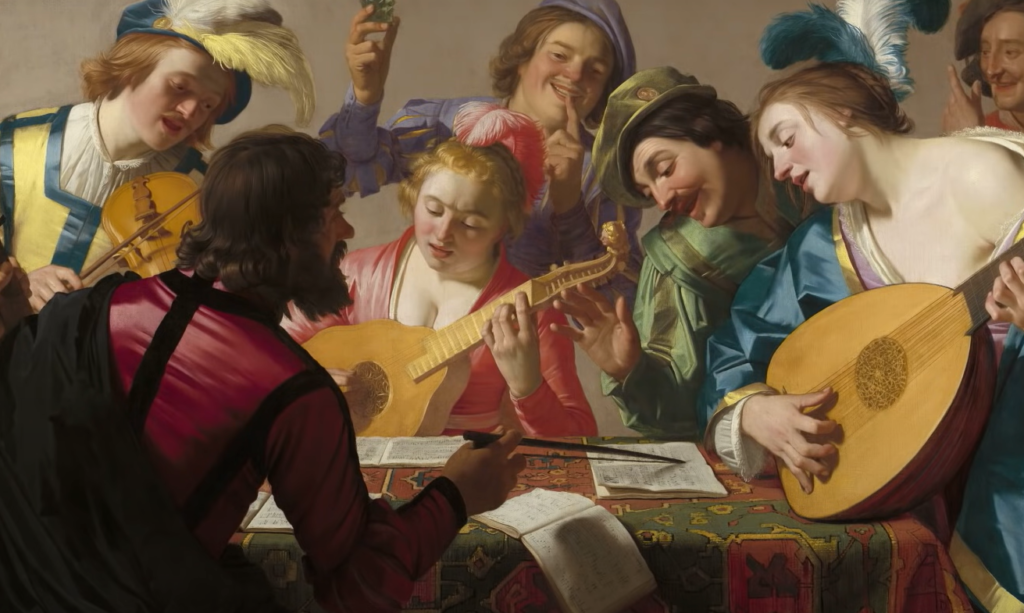
One of the most distinguishing features of medieval music is the use of Gregorian chant. Gregorian chant is a type of monophonic vocal music that was used extensively in the Middle Ages. This style of singing consisted of a single melody with no accompaniment. The melody was usually very simple and often had a hypnotic quality to it.
Another distinguishing feature of medieval music is the use ofMode. Mode is a system of musical notation that was used extensively in the Middle Ages. This system helped to organize medieval music and made it easier to read and write. There are eight different modes in total, each with its own unique sound.[1]
What is Renaissance Music?
Renaissance music is typically characterized by its increased use of secular themes, as opposed to the sacred music of the Medieval era. In addition, Renaissance composers began to experiment with new musical forms and styles, such as the madrigal and motet. The Renaissance also saw a renewed interest in ancient Greek and Roman culture, which had a significant impact on the development of music during this period.
One of the most important changes that took place during the Renaissance was the shift from monophonic to polyphonic music. Monophonic music consists of a single melody with no accompaniment, while polyphonic music features multiple independent melodies that are played simultaneously. This change resulted in a much more complex and interesting soundscape than was possible during the Medieval era.
Renaissance music also saw the development of new musical instruments, such as the lute and viola da gamba. These instruments allowed for a wider range of sounds and tones, which further expanded the possibilities for Renaissance composers.[1]
What is the difference between Medieval and Renaissance Music?
Medieval music is generally characterized by its simplicity and uniformity. This is in contrast to the highly diverse and complex nature of Renaissance music. One major difference between the two styles is the use of polyphony in Renaissance music. Polyphony is the simultaneous sounding of two or more independent melodies. This was a new development in Western music during the Renaissance and allowed for greater harmonic complexity. Medieval music, on the other hand, was mostly monophonic, meaning that only one melody was typically sounded at a time.
Renaissance music also saw an increased focus on secular (non-religious) subjects, while medieval music was largely religious in nature. This is reflected in the types of instruments used during each period. While both periods made use of the human voice, Renaissance music placed a greater emphasis on instruments such as violins, flutes, and lutes. These instruments were more suitable for playing secular music in large halls and other public spaces.
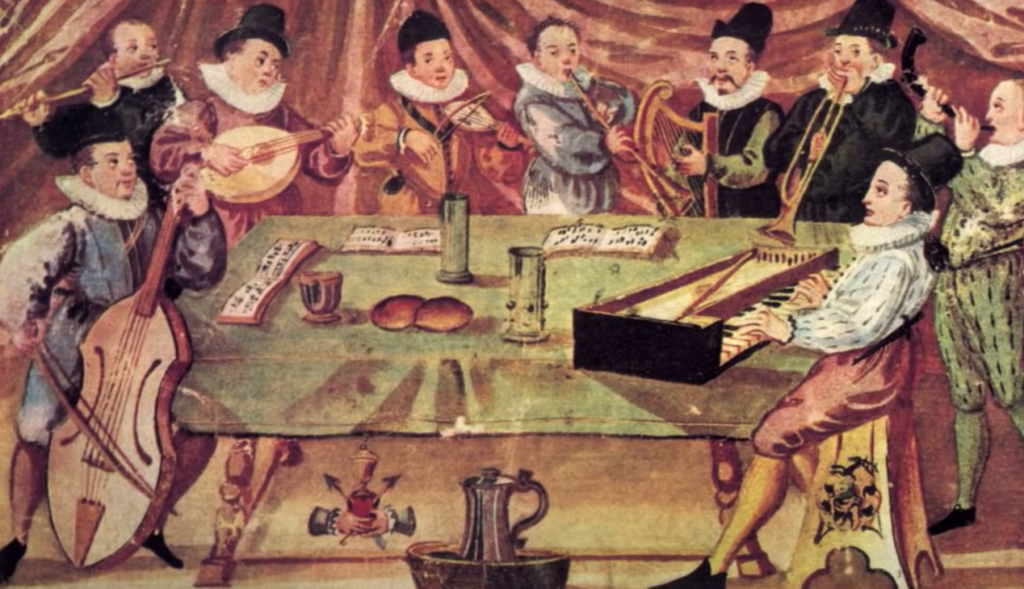
Finally, another key difference between Medieval and Renaissance music is the way in which it was performed. During the Medieval period, music was often performed by professional musicians who were employed by the Church or nobility. In contrast, the Renaissance saw a shift towards amateur musicians performing in smaller groups or even alone. This change was likely due to the increased popularity of secular music during this time.[1]
Why does Renaissance Music Sound Different from Medieval Music
Renaissance music sounds different from medieval music for a variety of reasons. The most obvious difference is the addition of wind instruments, which were not used in medieval music. This gave Renaissance music a more airy sound, and made it more suitable for outdoor performances.
Another difference between Renaissance and medieval music is the use of polyphony. Polyphony is the simultaneous sounding of two or more independent melodies. This was not common in medieval music, which tended to be more monophonic (having only one melody). The use of polyphony made Renaissance music sound much more complex than its predecessor.
Finally, the rhythmic structure of Renaissance music was different from that of medieval music. In particular, there was a greater emphasis on the downbeat, and rhythm was often more syncopated (irregular). This made Renaissance music sound livelier and more dance-like than medieval music.[2]
What happened during the Renaissance period? What was the music like in the period?
One of the biggest changes to occur in music during the Renaissance was the development of polyphony. Polyphony is when two or more independent melodies are combined into a single piece of music, creating a harmony. This was a departure from the monophonic (one-voice) style of medieval music, which typically consisted of a single melody line with no accompaniment. The addition of harmony made Renaissance music richer and more complex than its predecessors.
In addition to polyphony, another major change to musical composition during the Renaissance was the introduction of new musical instruments. Prior to the Renaissance, most music was vocal-based, with instruments playing a secondary role. However, during the Renaissance, composers began writing pieces specifically for instruments, which led to a greater variety of sounds and timbres. This increased use of instruments also helped to create a more lively and upbeat feel to much of the music from this period.[3]
What were the 3 basic purposes of art music during the Renaissance?
Art music during the Renaissance was used for a number of purposes, including entertainment, religious ceremonies, and political propaganda.
Musicians were often employed by the Church or by wealthy patrons to perform at private events. Court musicians were also common, particularly in Italy. Many of these musicians were highly skilled professionals who composed their own music or arranged existing pieces to suit the taste of their employer.
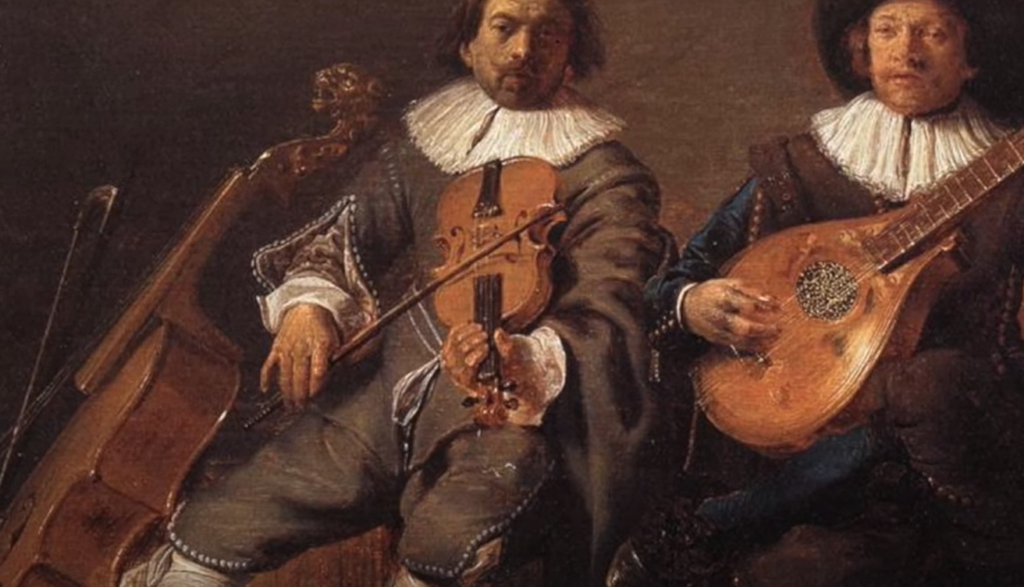
During the Renaissance, art music was often used as a tool of political propaganda. Rulers would commission composers to write works that glorified their actions or portrayed their enemies in a negative light. In some cases, such as the courtly love tradition in France, music was used to promote certain social values or moral codes of behavior.
Religious music was still a major part of life during the Renaissance. The Church continued to commission new works for use in services and ceremonies, and many private individuals also employed musicians to play religious music in their homes. Hymns, motets, and madrigals were all popular genres of religious music during the Renaissance.
In addition to these more serious uses, art music was also enjoyed simply for its own sake. Wealthy patrons would often hold musical events in their homes, at which professional musicians would perform for guests. This practice was particularly common in Italy, where the popularity of secular vocal music gave rise to a number of new genres such as the madrigal and canzonetta.[3]
Who is considered the greatest musician of the Renaissance?
There are many great musicians from the Renaissance period, but one of the most famous is Johann Sebastian Bach. Bach was a German composer and organist who lived from 1685 to 1750. He is known for his baroque-style music, which was popular during the Renaissance. Other great musicians from the Renaissance include Antonio Vivaldi, George Frideric Handel, and Claudio Monteverdi.[3]
What is Baroque vocal?
Baroque vocal music is characterized by its use of ornamentation. This means that singers would add embellishments to their melodies in order to make them more expressive. The techniques that were used for this purpose included vibrato, trills and runs. Another common characteristic of Baroque vocal music is the use of continuo. This is when a bass line is played by an instrument, typically a cello or bassoon, while the singer(s) improvises above it.
He wrote numerous cantatas, which are pieces for solo voice(s) and orchestra that tell a religious story.
How does the music of the Renaissance differ from music today?
The first major difference is that music of the Renaissance was heavily based on the church. This means that a lot of the music we think of when we imagine this time period is sacred music, or music written for religious purposes. A lot of the secular music from this time period was also written to be performed in churches or other religious institutions. This is because most people during the Renaissance were very religious, and religion played a big role in their everyday lives.
During the Renaissance, composers often wrote polyphonic music, meaning that there were multiple voices singing different melodies at the same time. This was a contrast to medieval music, which was mostly monophonic, meaning that all of the voices were singing the same melody. Polyphonic music was often more complex and interesting to listen to than monophonic music, and it was one of the things that made Renaissance music so unique.
Finally, another difference between Renaissance music and modern music is the instrumentation. During the Renaissance, a lot of music was written for voices alone, without any accompaniment from instruments. This is because most people during this time period couldn’t afford to own or play musical instruments. However, there were some pieces of Renaissance music that were written for instruments, and these pieces usually featured very simple melodies with basic harmonies.
What is known as non religious music?
One of the most significant changes in music during the Renaissance was the increased focus on secular music, or non-religious music. This type of music was often written for entertainment purposes, such as dances and love songs. While medieval musicians occasionally wrote secular music, it was not nearly as common as sacred music. The rise of secular music in the Renaissance can be attributed to a number of factors, including the increasing prosperity of cities and the growth of courtly life.
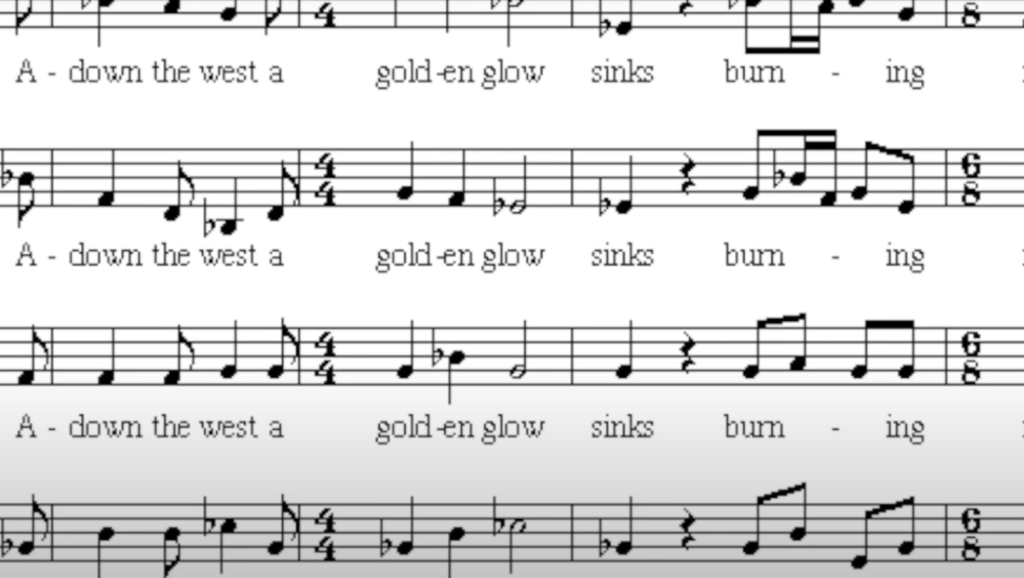
Another change in Renaissance music was an increased emphasis on individual expression. In the Middle Ages, most musical compositions were anonymous and had little to do with the personal feelings or experiences of the composer.[3]
Musical Evolution: Renaissance vs. Medieval Music
The Renaissance marked a significant shift in musical styles from the medieval era. Here’s a comparison of Renaissance and Medieval music, including their key characteristics, instruments, and notable composers.
| Key Characteristics | Instruments | Notable Composers |
|---|---|---|
| Humanism and Individualism | Lute, recorder, harpsichord | Giovanni Pierluigi da Palestrina, Josquin des Prez |
| Complex Polyphony | Organ, vielle (medieval fiddle) | Hildegard of Bingen, Guillaume de Machaut |
| Word Painting | Virginal, sackbut | Thomas Tallis, John Dowland |
| Harmony and Chord Progressions | Lira da braccio, shawm | Orlando di Lasso, Guillaume Dufay |
| Printing and Music Publications | Clavichord, rebec | Josquin des Prez, Palestrina |
Explanation of the Table:
- Key Characteristics: Describes the defining features of Renaissance and Medieval music.
- Instruments: Lists the instruments commonly used in each era.
- Notable Composers: Names some of the renowned composers from the Renaissance and Medieval periods.
The Renaissance and Medieval periods brought distinct musical changes:
Key Characteristics: The Renaissance was characterized by humanism and individualism, whereas the medieval era often had a strong focus on religion and collective identity.
Instruments: Renaissance music saw the use of instruments like the lute, recorder, and harpsichord, while medieval music relied on instruments like the organ and vielle.
Notable Composers: The Renaissance featured composers like Giovanni Pierluigi da Palestrina and Josquin des Prez, while the medieval era had Hildegard of Bingen and Guillaume de Machaut.
Understanding these differences allows us to appreciate the unique qualities and contributions of each musical era.
FAQ
How did music change during the Medieval and Renaissance eras?
The biggest change from medieval to Renaissance music was the shift from Gregorian Chant to polyphony. Polyphony is a type of musical texture where two or more independent melodic lines are combined into one piece of music, creating a harmony. This shift began in the late 1300s and early 1400s, with composers like Guillaume de Machaut and Francesco Landini writing some of the first examples of true polyphony.
During the Renaissance era, there was also a greater emphasis on secular (non-religious) music than there was during the Medieval era. While religious music still dominated, compositions for instruments and voices outside of the church became increasingly popular. This trend was furthered by the invention of new musical instruments, such as the viola da gamba and the lute, which were better suited for playing secular music than the traditional church instruments.
One of the most significant changes to music during the Renaissance was the development of musical notation. This allowed composers to write down their music exactly as they wanted it to sound, making it possible to create more complex pieces of music than ever before. Notation also made it easier for musicians to learn new pieces, as they could now simply follow along with a written score rather than having to rely on memory or oral tradition.
Why does Renaissance music sound fuller than medieval music?
One of the main reasons that Renaissance music sounds fuller than medieval music is due to the introduction of polyphony. Polyphony is when two or more independent melodic lines are combined in a piece of music, creating a richer and more complex sound. This was something that was not really done in medieval music, which tended to be much more focused on a single melody line.
Another reason why Renaissance music may sound fuller is due to the use of instruments. While instruments were certainly used in medieval times, they were not as prevalent as they were during the Renaissance. This increased use of instruments helped to create a fuller soundscape in Renaissance pieces.
What is the texture of Renaissance music?
The texture of Renaissance music is much more complex than that of medieval music. While medieval music was often based on a single melody, Renaissance music often featured multiple layers of melodies, called polyphony. This polyphonic texture created a richer sound that was more pleasing to the ear.
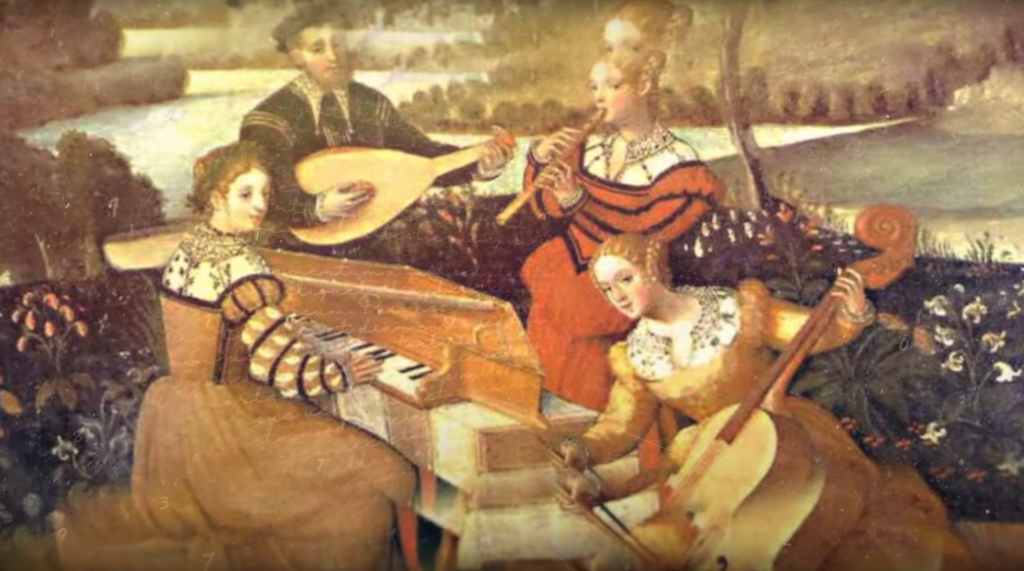
Renaissance composers also made use of new instruments, such as the lute and the viola da gamba. These instruments added a new level of expressiveness to the music of the time.
What is the texture of medieval music?
The texture of medieval music is largely homophonic, meaning that there is one melodic line with accompanying harmony. This is in contrast to the polyphonic texture of Renaissance music, which features multiple independent melodic lines. Medieval music also often makes use of drones and monophonic chants.
What were the key advancements in musical notation during the Renaissance compared to medieval music?
During the Renaissance, musical notation became more precise and standardized. The use of musical scores with staff notation allowed for more accurate representation of rhythm and pitch, leading to more complex and intricate compositions.
How did the role of vocal music change between the Medieval and Renaissance periods?
In the Medieval era, vocal music was predominantly sacred and monophonic, emphasizing plainchant and Gregorian chant. In the Renaissance, there was a shift towards polyphony, with composers creating intricate harmonies in both sacred and secular vocal music.
What instruments were more commonly used in Renaissance music compared to medieval music?
Renaissance music saw an expansion in the variety and popularity of instruments. While both eras used instruments like the lute and recorder, the Renaissance introduced instruments like the viola da gamba and the harpsichord, contributing to a wider range of musical sounds.
How did the composition and structure of music change between the Medieval and Renaissance periods?
Medieval music often followed simple and repetitive forms, while Renaissance music featured more complex structures. Composers in the Renaissance began to use techniques like imitative polyphony and the development of musical motifs, creating richer and more intricate compositions.
What role did the printing press play in the dissemination of music during the Renaissance compared to medieval times?
The invention of the printing press had a significant impact on music during the Renaissance. It allowed for the mass production of musical scores, making music more accessible to a wider audience and facilitating the spread of musical innovations.
How did the themes and subject matter of secular music change between the two periods?
Medieval secular music often focused on courtly love and chivalry. In the Renaissance, secular music expanded to cover a wider range of themes, including love, nature, and daily life. This broader subject matter contributed to the diversity of Renaissance music.
Did the use of harmony and counterpoint differ between Renaissance and medieval music?
Yes, harmony and counterpoint played a more prominent role in Renaissance music. Composers of this era were known for their skillful use of intricate harmonies, multiple melodic lines, and dissonance, which created a more complex and lush musical texture.
How did the patronage of music change between the Medieval and Renaissance periods?
During the Medieval period, much of the patronage for music came from the church. In the Renaissance, secular institutions, courts, and wealthy individuals became significant patrons of music, leading to a broader range of musical compositions and styles.
What impact did the rediscovery of ancient Greek and Roman texts have on music during the Renaissance?
The rediscovery of ancient texts and ideas during the Renaissance, known as the Renaissance humanism movement, influenced the content and themes of music. Composers drew inspiration from classical texts and used them as the basis for new compositions, infusing their music with intellectual and philosophical elements.
How did the use of vocal ensembles change in Renaissance music compared to medieval times?
In the Renaissance, vocal ensembles gained prominence, leading to the development of choral music. Composers wrote for multiple voices, creating complex harmonies and intricate choral arrangements, which became a hallmark of this musical period.
Useful Video: Why Does Renaissance Music Sound Different From Medieval Music?
Conclusion
So, in conclusion we can see that there were several ways in which music in the Renaissance differed from music in the Medieval era. The biggest difference was probably in the style and form of the music, with Renaissance composers favoring more intricate polyphony and counterpoint over the simpler monophonic melodies of their predecessors. Other notable differences include the increased use of instruments, particularly wind instruments, and a greater focus on secular rather than religious subject matter.
Whether you prefer the sound of Medieval or Renaissance music is entirely up to personal taste, but it’s interesting to note the contrast between the two styles. If you’re interested in learning more about either period of music history, there are plenty of resources available online or at your local library. Who knows, you might even find yourself inspired to create some music of your own in the style of one of these eras! Thanks for reading.
References:
- https://www.differencebetween.com/difference-between-medieval-and-vs-renaissance-music/#
- https://www.cmuse.org/why-does-renaissance-music-sound-different-from-medieval-music/
- https://www.quickanswer.blog/quick-answer-how-was-the-music-like-in-the-renaissance-period/

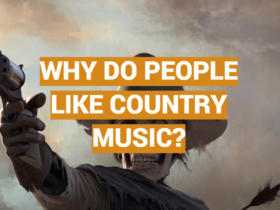
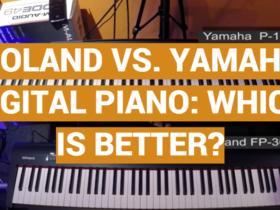

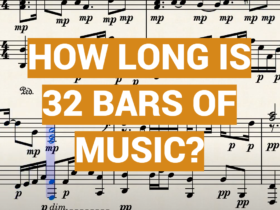
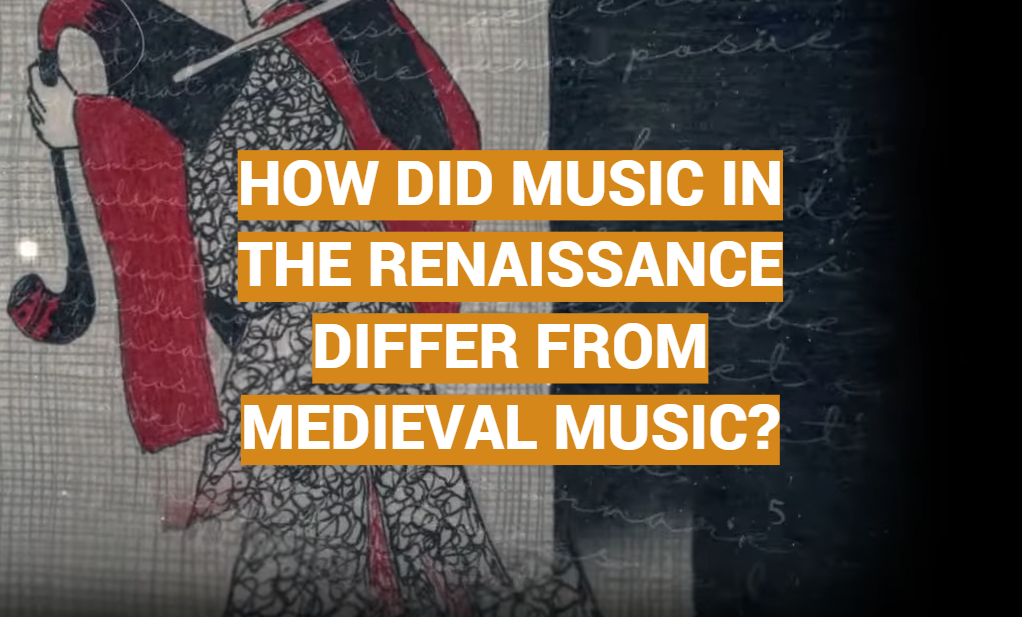


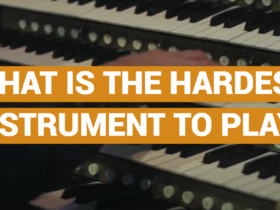

As a hobbyist historian fascinated by the evolution of music across eras, I’ve thoroughly enjoyed discovering how compositions transformed between the Medieval and Renaissance periods. One of the most obvious shifts to me is the move toward more complex, intricate polyphonic textures rather than plainchant monophony. Comparing a Gregorian chant versus something like a Thomas Tallis motet reveals vastly richer, interwoven melodic and harmonic ideas by the Renaissance. The concept of a cappella vocal ensembles began taking shape. Likewise, advancements allowing music to be written and disseminated on paper gave composers greater creative freedom to experiment beyond monastic traditions. Dissonances became more commonplace and the increasing complexity of rhythm, meter, and notation reflects Renaissance humanist perspectives valuing sophistication. Music revealed a colorful new dimension in this era!
My early music ensemble often covers French choral works spanning the late Middle Ages through early Renaissance. An aspect that immediately strikes me is the gradually more diverse vocal part writing emerging during this transition. Whereas Medieval organum and conductus tended to simply double the same melody at perfect intervals, composers like Dufay began introducing more complexity. I clearly hear Bass voices receiving more melodic content and Alto lines no longer merely shadowing the sopranos. This trajectory continued expanding with composers like Ockeghem intricately layering independent voice parts to create stunning harmonic tension. The concept of Bass and Tenor registers serving functional harmonic roles took root. Comparing hollow versus full sonorities before and after this shift never ceases to fascinate!
As a lutenist with a penchant for the early repertoire, I’m well versed in instrument evolution between the Renaissance and prior Middle Ages. Plucked string instruments rose tremendously in popularity and respectability thanks to both innovations in construction allowing for projections and composers writing idiomatically for them. Comparing the music written for Renaissance lute versus its crude ancestor, the Medieval gittern reveals rapid advancement. The gittern’s piercing nasal tone and limited range was far more suitable just doubling a vocal melody. Lute technique afforded greater harmonic and polyphonic capabilities mirrored in the music written during this time. Tuning systems and tablature notation also advanced tremendously. Representing chords and multiple parts at once became widespread thanks to its expanded scope through innovations.
One musical aspect I’m constantly attuned to as an amateur composer is transformations in modality between eras. Comparing a Gregorian chant in Dorian mode to a Josquin motet, for instance, reveals usage distinctions. While structural hierarchy of pitches and cadence treatment loosened up from the strict Medieval conventions, Renaissance harmony centered around emulating the utmost perfection of musical sonorities. This led to embracing tuning pure 3rds and 5ths that eventually paved the way tonality. In the Renaissance, I perceive mode flavors as adorning harmony differently versus independently governing melodies as seen earlier on. As Renaissance polyphony and functional harmony developed, it set the stage for the Common Practice period. Fascinating to hear that genesis manifest!
As a scholar examining cultural changes between historical artistic periods, evaluating differences in musical performance practice always provides invaluable insights. Comparing a plainchant versicle to something like a Palestrina Mass movement, a key contrast that jumps out surrounds text delivery and phrase treatment. While Medieval chant extensively melismas certain syllables, Renaissance sacred works took cues from humanist rhetoric focusing on text declamation conveying the message. Much more syllabic with clarity of language at the forefront. At the same time, Renaissance secular forms like the frottola and villanella featured more elaborate melismatic writing. Different approaches manifest perhaps reveals shifting priorities whether the music served religious or entertainment contexts during this transition.
Reviewing my undergraduate music history notes, one difference between Medieval and Renaissance musical rituals I found intriguing relates to the evolving role of musical participation for worshipers. While Gregorian chant served an incredibly important religious function during the Middle Ages, musical development for the congregation was quite limited being mainly vocal tradition. However moving into the Renaissance, active music making for the community increased as instruments like the portative organ gained esteem. This suggests Renaissance ideals empowered people searching for truth through music on their own terms beyond just following clergy. An impactful shift as Renaissance humanism philosophy permeated music!
As an ethnomusicology student exploring traditions across cultures, the advent of written musical notation opening doors for more elaborate compositions fascinates me when contrasting Medieval and Renaissance periods in Western Europe. Building on earlier neumatic notation methods, Guido d’Arezzo’s staff notation system enabled retaining polyphonic, multi voice works accurately over time and wider circulation across regions. Comparing the texture and intricacy of writing pre-and post notation’s conception reveals that while earlier composers were certainly skilled, documentation limitations hindered complexity. However with Renaissance notation, no longer needing to solely preserve melodies by rote opened floodgates enabling Academies, Education, multi-national exchanges of ideas that transformed music profoundly. An incredible documentation based breakthrough still rippling effects today!
As an instrumentalist who plays early wind instruments like shawm, sackbut, and recorder, I’m well aware of the rapid evolution that took place moving from the Medieval to Renaissance periods thanks to innovations in instrument making. Comparing something like a crumhorn to a more refined cornetto shows tremendous advancements in playability, tone quality, and consequently more idiomatic writing emerging. Renaissance consort music written for instruments like recorders, viols, and sackbuts exhibits more melodic and harmonic sophistication thanks to greater capabilities beyond just drones or signaling functionality once prevalent. The increasing presence of published pedagogical treatises drastically expanded instrumental technique possibilities as well. What an exciting transitional time to be an instrumentalist!
I sing a lot of sacred polyphony in my early music vocal ensemble, so exploring differences in text setting approaches between Medieval and Renaissance eras always intrigues me. Comparing something syllabic like a Gregorian chant versus a Josquin motet reveals a much more nuanced handling of text stress and inflection in the Renaissance treating scripture more like poetry. The interplay between simultaneous lines seems to take textual meaning and delivery into account more rather than just resulting in pleasing harmonies by chance. I perceive this as reflecting Renaissance ideals emphasizing rhetorical eloquence. As scholars closely studied ancient Greek and Roman arts, applying lessons from rhetoric likely bled into lyrical music. A beautiful interdisciplinary crossroads evidencing profound humanistic thought permeating creative realms.
As a scholar studying cultural paradigm shifts between eras, evaluating the role and treatment of dissonance pre- and post-Renaissance proves quite fascinating to me. The hollow open sonorities of Medieval organum gave way to lusher textures as composers approached dissonance with more nuance. Rather than strictly avoiding it altogether or letting clashes happen haphazardly, the increased dialogue between polyphonic voices led to dissonance becoming an expressive tool in itself to be carefully cultivated. Something I admire in the music of Ockeghem and Obrecht is their scientific approach calculating precisely where a dissonance should fall to maximum emotional impact before resolving. The intellectualization of such musical devices perhaps reflects values characteristic of the age.
Researching repertoire for my early music vocal quintet often has me pondering stylistic differences between the Medieval and Renaissance aesthetic. One intriguing transformation on full display comparing eras is the shift from more narrow, stepwise motion in plainchant to much broader leaping melismas embracing a wider range as polyphony took hold. In line with goals celebrating human potential, Renaissance vocal music exemplified freedom and emotion conveyed through these virtuosic melismas. The dramatic expansion of range also suggests a pivot toward spectacle and entertainment value for courtly audiences. Perhaps this links to emerging merchant class having greater exposure patronizing arts broadly, necessitating greater showmanship. An intriguing possible impetus!
Reviewing assignments recently on stylistic transitions in Western music for my music history course, an interesting distinction in compositional methodology jumped out contrasting the Medieval and Renaissance eras. Earlier in the Middle Ages, musical ideas tended to be generated from preexisting chant melodies. Composers primarily built off liturgical material. However, moving into the Renaissance ideas stemmed more from the harmonic possibilities realized through the new textural complexity polyphony enabled. Series of sonorities led to melodic wrinkles rather than starting with a melody outright. This shift makes innate sense realizing how much conceptions around harmony evolved so exponentially thanks to innovations happening around this transitional stage.
As a lutenist and guitarist, I’ve been researching instrument evolution between eras quite extensively as I reconstruct various versions to feature on a recording project. Comparing something like a medieval lute to Renaissance archlute reveals vast expansion of both range and harmonic capabilities over a relatively short period time. Thanks to additional courses and strings spanning lower registers, the rhetorical bass register came into fruition enabling true polyphonic realization for the first time. Composers like John Dowland clearly exploited these newfound capabilities. Comparing his intricate lute song accompaniments against earlier improvised drones reveals worlds of difference in approach thanks wholly to physical design innovations in the Renaissance Instrumentarium.
I perform regularly on recorder with an early music wind band, so exploring differences in early woodwind writing style pre- and post-Renaissance proves endlessly fascinating. One major trend that jumps out is instrument-specific idiomatic writing becoming mainstream as Consort groups rose in popularity amongst court circles and amateurs. Earlier medieval wind writing tended to adapt vocal lines not particularly suited to instruments. However, virtuosic solo “divisions” over ground basses emerged following advancements expanding capabilities. Compare dense vocal textures to something like quartet ricercars by Brunelli reveals clever exploitation of instrument strengths thanks to this newfound pairing of advancing technique and appreciation by Renaissance audiences.
As a scholar studying cultural paradigmatic shifts, I’m fascinated by the differences in mathematical underpinnings between medieval and Renaissance musical approaches uncovered in my analysis research. Earlier medieval modal frameworks relied predominantly on poetic textual rhythm to dictate musical organization. However, the Renaissance gravitation toward richer harmonies and polyphony opened the door to applications of pure, even temporal ratios. Comparing something like a Perotin organum to Ockeghem’s canons reveals deliberate organization around temporal proportions as Renaissance composers became enthralled with musical science theory espoused by thinkers like Gioseffo Zarlino. This intellectualization of composition seems characteristic of dominant humanist philosophical views that music could unlock universal truths and meaning.